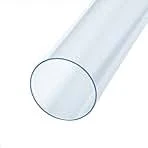Dec . 11, 2024 04:18 Back to list
Exploring the Versatility and Applications of PVC Plates in Modern Industries
Exploring the Versatility of PVC Plates
Polyvinyl chloride, commonly known as PVC, is a synthetic plastic polymer that has become a popular choice in various industries due to its durability, cost-effectiveness, and adaptability. Among the many forms that PVC takes, the versatile PVC plate has emerged as a favored material in sectors ranging from construction to crafts. This article delves into the various applications, advantages, and considerations associated with PVC plates.
Applications of PVC Plates
1. Construction and Building One of the most significant uses of PVC plates is in the construction industry. Builders and architects favor PVC for making durable wall panels, ceilings, and cladding. Its water-resistant properties make it ideal for environments prone to moisture, such as bathrooms and kitchens. PVC plates are also used for making windows and doors due to their resistance to rot and corrosion.
2. Signage and Displays PVC plates are extensively used for signage. Their smooth surface allows for high-quality printing, making them an excellent choice for promotional materials, indoor and outdoor signs, and displays. The lightweight nature of PVC makes it easy to install and transport, further enhancing its appeal in the advertising sector.
3. Crafting and DIY Projects In the realm of arts and crafts, PVC plates are a favorite among hobbyists. These plates can be easily cut, shaped, and painted, providing endless possibilities for creative projects. From custom home decor to model-making, the flexibility of PVC plates makes them an ideal medium for various DIY enthusiasts.
4. Packaging The packaging industry also leverages the advantages of PVC plates. Their rigidity and transparency allow for the creation of sturdy containers that protect products while still displaying them attractively. PVC is often used in producing clamshell packaging for various items, ensuring that goods remain safe and secure during transport.
5. Furniture Manufacturing In recent years, PVC plates have found their way into furniture design. They are used for making tables, chairs, and cabinets, providing not only durability but also a modern aesthetic. Their resistance to stains and scratches makes them a favorite choice for household and commercial furniture alike.
Advantages of PVC Plates
PVC plates are celebrated for a variety of reasons
- Durability One of the primary advantages of PVC plates is their long-lasting nature. They do not warp, crack, or corrode easily, making them suitable for both indoor and outdoor use.
pvc plate

- Water and Chemical Resistance PVC is inherently resistant to moisture and a variety of chemicals, which enhances its suitability for different environments, particularly in industrial and marine applications.
- Cost-Effectiveness Compared to other materials, PVC plates are relatively inexpensive to produce and purchase, which makes them an attractive option for businesses and consumers alike.
- Lightweight The lightweight properties of PVC plates facilitate easy handling and installation, reducing labor costs and making them easier to transport.
- Ease of Maintenance PVC plates are easy to clean and maintain, requiring minimal upkeep. This characteristic is particularly beneficial in high-traffic areas or industries where hygiene is a priority.
Considerations When Using PVC Plates
While PVC plates offer numerous benefits, there are some considerations to keep in mind
- Environmental Impact PVC production has raised environmental concerns due to the emission of harmful chemicals. Thus, recyclability and the impact of PVC waste should be considered.
- Heat Sensitivity PVC can be sensitive to high temperatures, making it unsuitable for applications that involve extreme heat exposure.
- Aesthetic Limitations While PVC plates can be painted or laminated, they may not have the natural aesthetic appeal of materials like wood or metal.
Conclusion
In conclusion, the versatile PVC plate is a highly regarded material that finds uses in various industries, from construction to crafting. Its durability, cost-effectiveness, and ease of maintenance make it an attractive option for many applications. However, it is important to weigh its advantages against environmental considerations. As technology and manufacturing processes evolve, the potential for PVC plates continues to grow, paving the way for new and innovative uses in the future. Whether for practical applications or creative projects, PVC plates remain a valuable resource.
-
High-Quality PPR Pipes and Fittings Durable ERA PPR & PVC PPR Solutions
NewsJul.08,2025
-
Black HDPE Cutting Board - Durable, Non-Porous & Food Safe HDPE Plastic Cutting Board
NewsJul.08,2025
-
High-Quality CPVC Panel Durable HDPE & PVC Panels Supplier
NewsJul.08,2025
-
Double PE Welding Rod Supplier - High Strength, Durable & Versatile Welding Solutions
NewsJul.07,2025
-
High-Quality PVC-O Pipe Supplier Durable 75mm PVC Pipe & Connections Leading PVC Pipe Company
NewsJul.07,2025
-
HDPE Drainage Pipe Supplier – Durable & Corrosion-Resistant Solutions
NewsJul.06,2025

